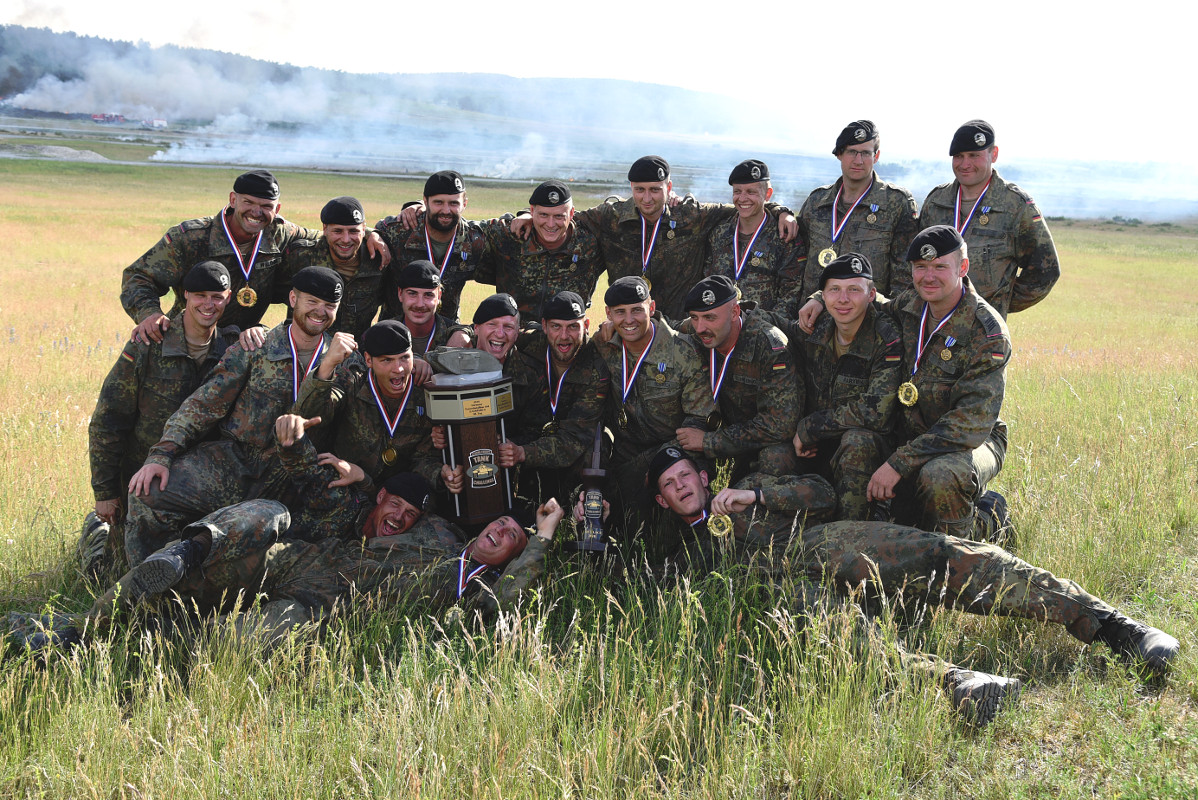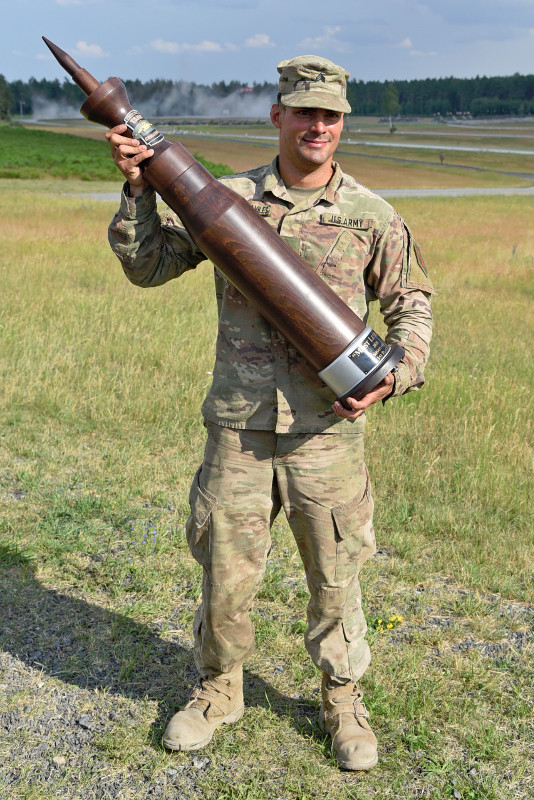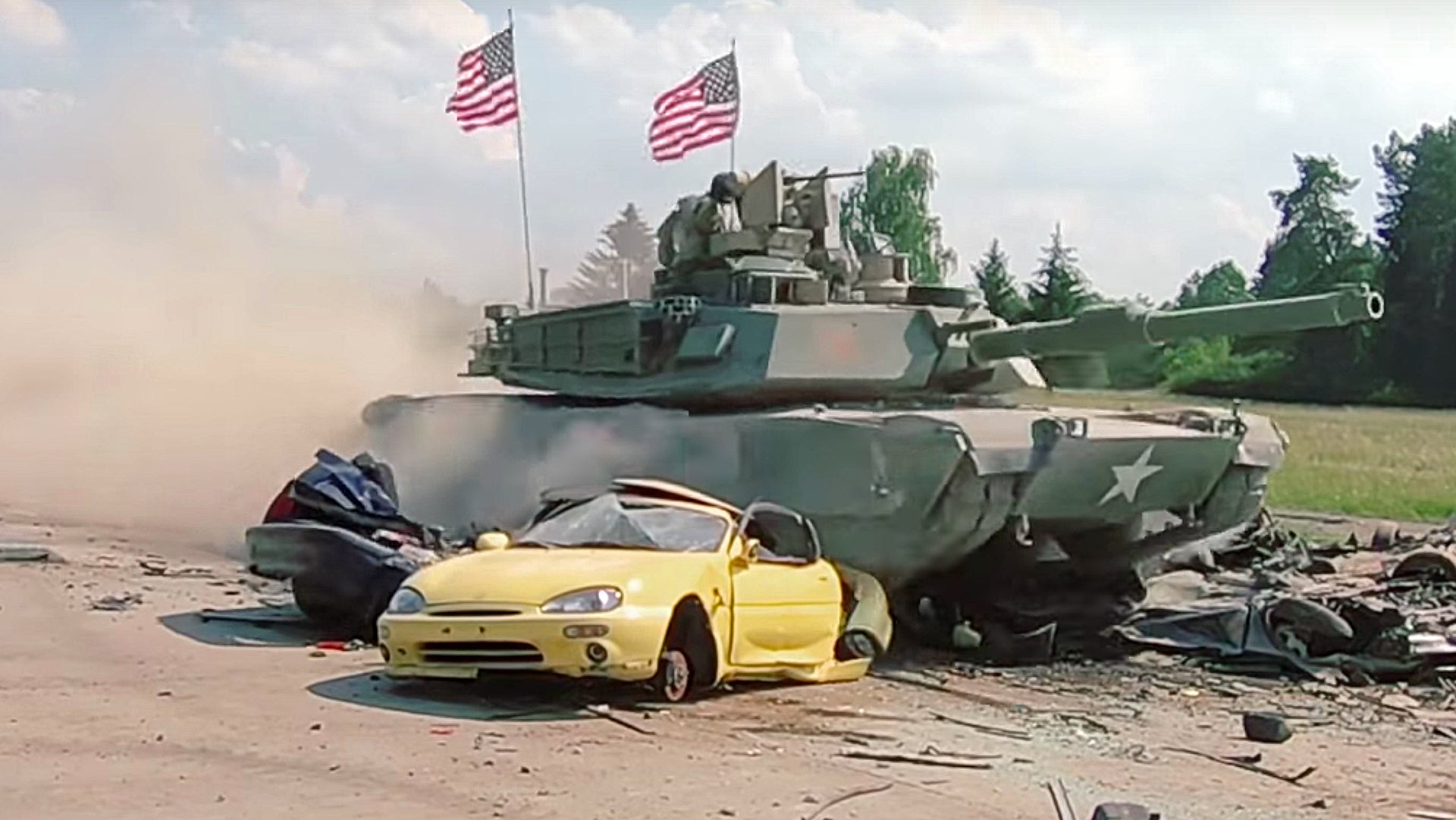The idea of green U.S. Army M1 Abrams tanks with big white stars on their sides, huge American flags flying on top, and art on the hull depicting a turtle wearing a World War II-era tanker uniform, running over a pile of cars sounds like something straight out of a 1980s arcade game. But its actually a real scene from the annual Strong Europe Tank Challenge at the service’s 7th Army Training Command’s Grafenwoehr Training Area in Germany.
Since 2016, NATO allies and other friendly nations have sent teams of tankers to Grafenwoehr for the event, which the United States and Germany host together. The gathering involves a number of different activities for crews in and out of their vehicles. The goal is to offer the armor troops an opportunity to train together and build both professional and interpersonal relationships to foster better ties between the participating countries.
The 2018 iteration of the challenge included teams from NATO members France, Germany, Poland, the United Kingdom, and the United States, along with those from non-member states Austria, Ukraine, and Sweden. This was the first time the British and Swedish Armies had ever participated in the event.


Each country supplies its own tanks. The Austrians, Germans, Poles, and Swedes all brought variants of the German-made Leopard 2. The American, British, French, and Ukrainian crews drove M1A2 Abrams, Challenger 2, Leclerc, and T-84 tanks respectively.
The U.S. Army crews came from the 2nd Battalion, 70th Armor Regiment, assigned to the 2nd Armored Brigade Combat Team of the 1st Infantry Division. The division, which has a storied history dating back to World War I, is also known as “The Big Red One,” and its insignia was another prominent part of the special paint scheme on the participating American Abrams.
The videos above and below give a good sense of the diversity of the Strong Europe Tank Challenge’s events. Beyond crushing cars, teams also conduct conventional gunnery training and precision maneuvering in their vehicles and run through obstacle courses and compete in “Iron Man” style endurance challenges while carrying heavy tank ammunition and tires while on foot.


The United States and its allies and partners are hardly the only ones to host this sort of event. Every year since 2013, the Russias have held what they call the Tank Biathlon, which brings together tank crews from all over the world.
That gathering is much more akin to a sporting competition, though, and often involves vehicles painted in lurid colors. Participants don’t have to supply their own vehicles either, with most countries receiving Russian T-72-series tanks in order to compete, giving the event the air of an arms show, as well. China notably always brings its own Type 96A and India has employed its T-90S “Bhishma” in the past.
There’s no official connection, but the Strong Europe Tank Challenge does seem to be a response of sorts to the Tank Biathlon. The United States has received two unofficial invitations to the Russian event, one in 2013 and another in 2017, but has never sent any teams to participate.

So far the United States hasn’t won the Strong Europe Tank Challenge, either. The Germans have now placed first twice, in 2016 and in 2018. There’s something more than a little ironic about that given the near constant reports about the poor state of the German Army and the low availability of working tanks. Germany’s public broadcaster Deutsche Welle reported in February 2018 that the only nine of the country’s 44 Leopard 2s were operational.

The Germans were also runner-up to the Austrians, who took the top slot, in 2017. Winning the event earns a team a placard on the event’s signature trophy, as well as another one shaped like a round of tank ammunition that the crew gets to keep. One of the crews from 2-70th Armor did pick up first place in the shoot-off, though, earning the title “Most Lethal” and a trophy of their own.

There’s no indication the United States or Germany intends to stop holding the challenge, so there’s always next year. And maybe the favored Germans will have to take off a year if they run out of working Leopard 2s.
Contact the author: jtrevithickpr@gmail.com
